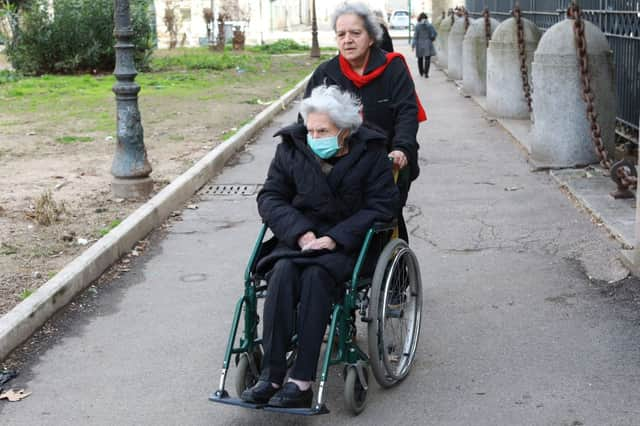People in England who were shielding can now leave their homes as lockdown eases - here's what you need to know


Back in March, as the coronavirus crises was only beginning to get going, Communities Secretary Robert Jenrick announced that 1.5 million of the UK's most vulnerable people would be asked to "shield" in self-isolation for a minimum of 12 weeks.
Now, roughly ten weeks in, the government has updated its guidance in England among claims levels of the Covid-19 disease are “substantially lower” now than when shielding was first introduced.
Advertisement
Hide AdAdvertisement
Hide AdThis means that in England – other areas of the UK set their own guidance – people who are shielding can now leave their home if they wish, “as long as they are able to maintain strict social distancing.”
Here’s everything you need to know:
What is shielding?
Shielding is a means of protecting society's "extremely vulnerable" from contracting Covid-19.
Those categorised as vulnerable because of an underlying health condition should have received written communication from their GP practice or specialist on how best to protect themselves in March.
Those affected were advised to stay at home at all times and avoid any face-to-face contact for a period of at least 12 weeks from the day they received their letter.
Advertisement
Hide AdAdvertisement
Hide AdPeople falling into this “extremely vulnerable” group include:
- Solid organ transplant recipients
- People with specific cancers
- People with severe respiratory conditions including all cystic fibrosis, severe asthma and severe COPD
- People with rare diseases and inborn errors of metabolism that significantly increase the risk of infections (such as SCID, homozygous sickle cell)
- People on immunosuppression therapies sufficient to significantly increase risk of infection
- Women who are pregnant with significant heart disease, congenital or acquired
Leaving the house is prohibited, even to go out for shopping, leisure or travel or to pick up food and medication deliveries.
Carers are able to continue to visit but must follow guidelines, and those without a care network close by can make use of a national support system, including pharmacists, supermarkets and local authorities.
Those who are shielding also get a phone number to ring if they need support accessing food or medicine.
Advertisement
Hide AdAdvertisement
Hide AdWhat do the changes mean for those who are shielding?
Changes come into force today (1 June) in England only, where lockdown measures are being lifted at a much faster rate than other areas of the UK despite new daily infections still numbering in the thousands.
“People who are shielding remain vulnerable and should continue to take precautions but can now leave their home if they wish, as long as they are able to maintain strict social distancing,” say the Government.
“If you choose to spend time outdoors, this can be with members of your own household.
“If you live alone, you can spend time outdoors with one person from another household. Ideally, this should be the same person each time. If you do go out, you should take extra care to minimise contact with others by keeping 2 metres apart. This guidance will be kept under regular review.”
More information on shielding measures can be found here